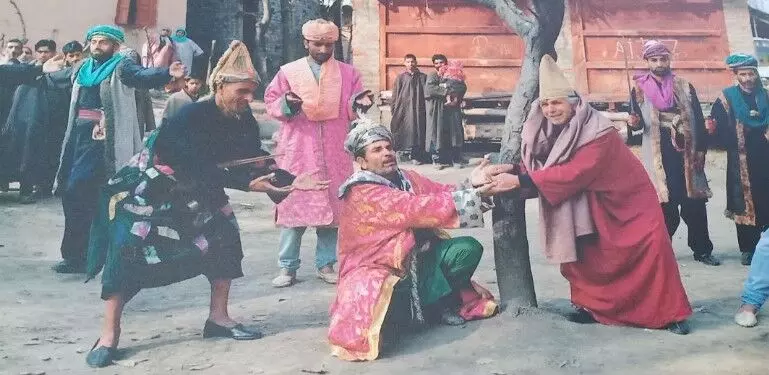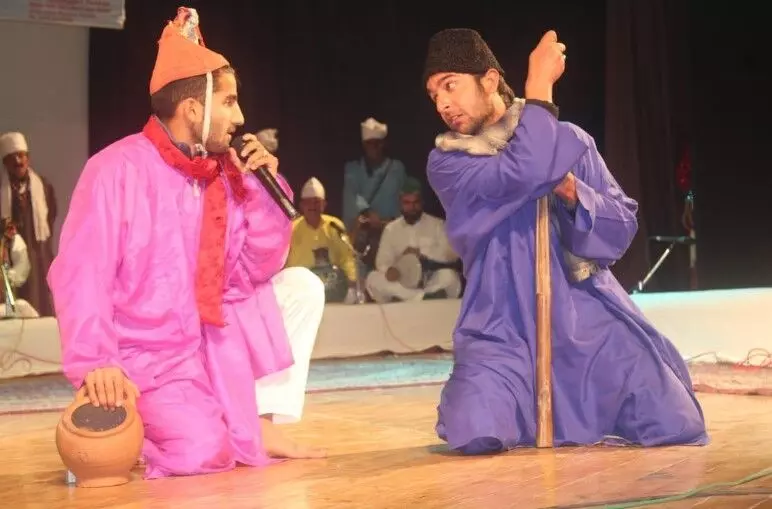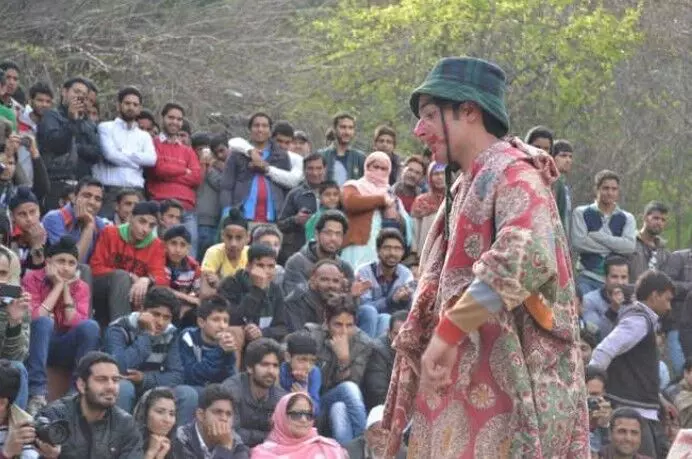
“The government claims they are boosting the artists associated with Kashmiri culture, but ground reality is way different. Artists associated with culture are jobless. Despite having artists here outsiders are being honored at events”, said Rayees Wathori, a well known young artist of the Valley who hails from central Kashmir’s Budgam district. Wathori holds a PG Diploma in folklore and cultural studies, and has received formal training in stagecraft, from the Actors Creative Theater of Srinagar.
“The world has changed, and unless we do not move with time and introduce modern elements into our folk theatre, Bhand Pather cannot survive,” he said, explaining that it was time women were allowed to perform in Bhand Pather. Like Wathori there are many artists who want to revive this element of traditional culture of Kashmir. These young artists are also seeking support from the administration.
‘Bhand’ means artist, and ‘Pather’ means drama. Bhand Pather has a rich history in Kashmir. According to some accounts, this form of street theatre is nearly 2000 years old.
Abdul Rahman Baghatt (62) who is associated with Band Pather told The Citizen that it is frequently performed in public places. There are no written scripts and the theatre features traditional depictions of the social, cultural, religious, and political conundrums that are present in the region.
The acts also raise issues such as conflicts and hypocrisies through mimicry, satire, and comedy. This centuries-old Kashmiri folk theatre has served as a social mirror. The act is centred around one performer who plays various characters through acting, dancing, and even playing a musical accompaniment. The act doesn’t use recorded music or any backstage audio, and the artist performs live in front of the gathered audience.
Age is not a factor for performers as the art has been passed on from one generation to the next. Only men are allowed to perform in the Bhand Pather, and they also enact the feminine roles. Bhand Pather music is performed on the dhol, nagara, and the surnai.

According to the artists people would eagerly await the performances. In the past, Bhand Pather played a significant role in wedding rituals. However, today, the artists say, “the authorities’ neglect is to blame for the art’s daily deterioration”.
Many artists have chosen not to teach their children this art form any more. “Artists have given up on their craft. There is no policy for artists in Kashmir,” lamented a Bhand Pather artist.
Many artists now work in other occupations in order to make ends meet. Some say that even the audiences are thinning out, “Bhand Pather was a source of our livelihood, but over time people treated it as entertainment.”





